The 10 Species Of Wild Cats Of South America
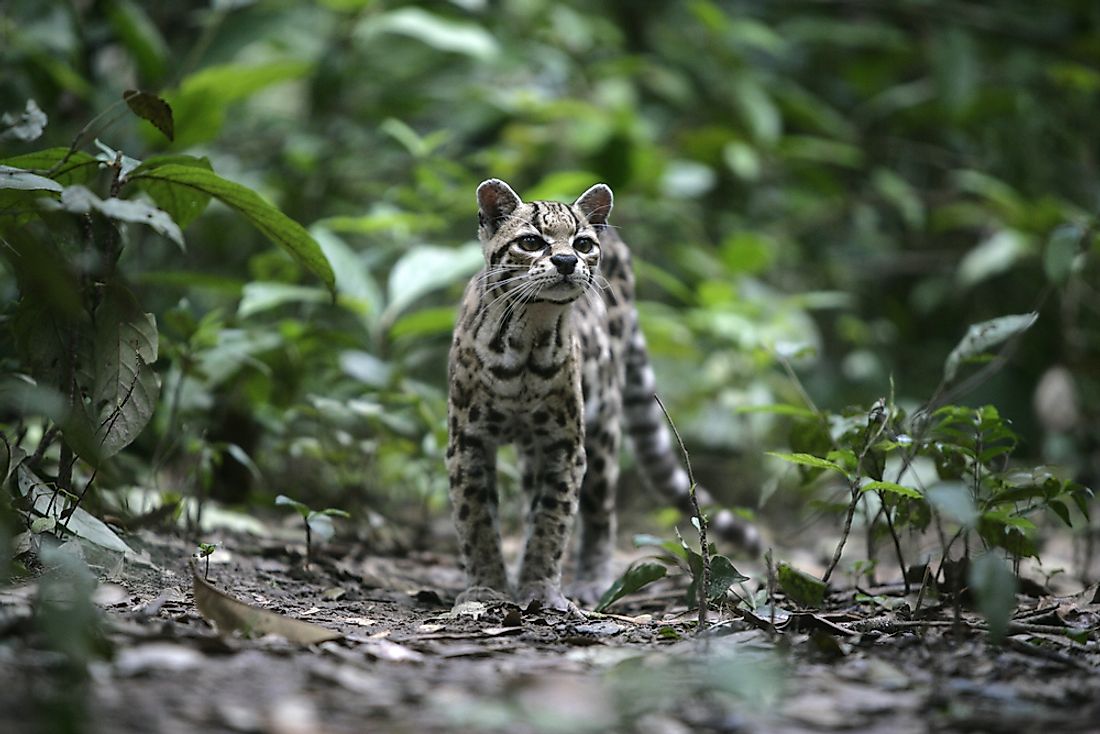
South America’s wild habitats house large fractions of our planet’s biodiversity and this includes ten species of wild cats found in the continent. Here is a list of the wild cats of South America:
10. Andean Mountain Cat
The Leopardus jacobita is a wild cat living at high elevations in the Andes of South America. They are found at elevations ranging from 5,900 ft to 13,000 ft. Thus, these cats inhabit rugged terrains with steep slopes and little vegetation. The cat’s ashy-gray fur with sparsely distributed spots and blotches camouflages it well in the mountainous environment. The nose and lips are black. The length of the adult cat ranges between 57.7 and 85 cm. The mountain viscacha is the most important prey of this species. The Andean mountain cat is labeled as Endangered on the IUCN Red List since only about 2,500 individuals of this species are believed to survive in the wild. Hunting for fur and killing in Bolivia and Peru for superstition are the biggest threats to the Andean mountain cat populations.
9. Cougar
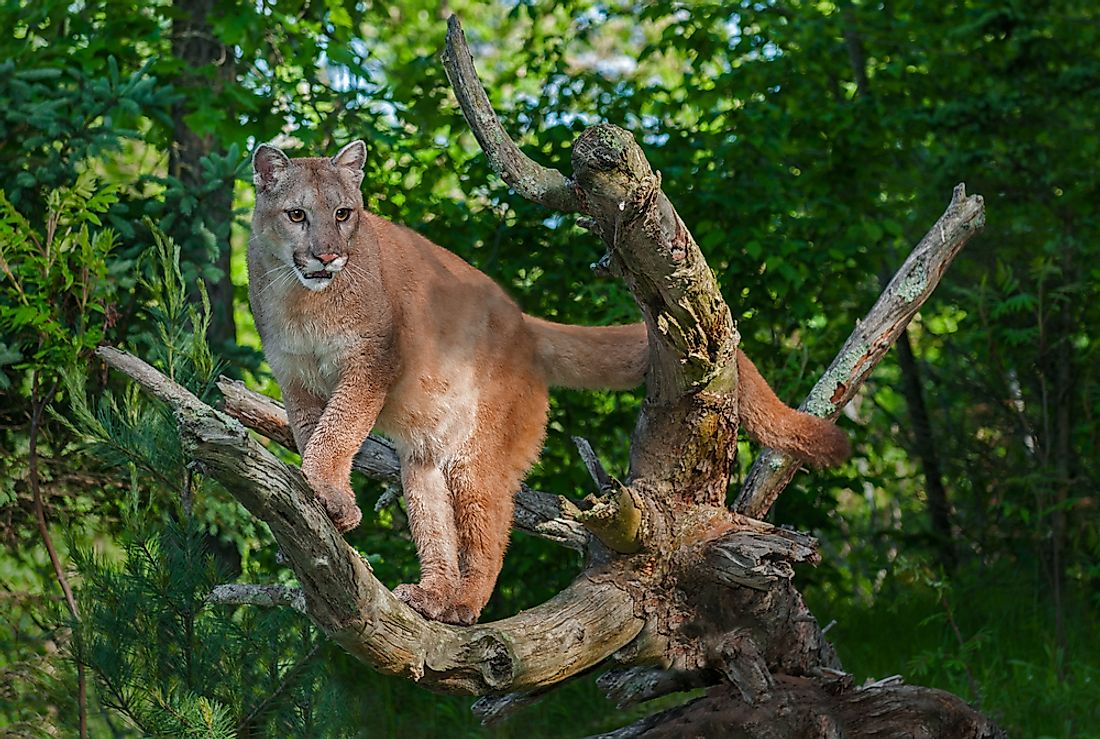
The Puma concolor or the mountain lion is one of the biggest wild cats found in the Americas. The cougar has a wide range stretching from Yukon in Canada to the South American Andes. The species can adjust to a wide variety of habitats in its range including all types of forests and even mountainous desert habitats. However, locations with dense underbrush are the preferred habitats for this cat. It is the New World’s second heaviest cat. The height of these cats at the shoulder ranges from 60 to 90 cm. The average length of adult males from nose to the tip of the tail is 2.4 m while that for females is 2.05 m. The coat has a nearly uniform color but varies from silvery-gray to reddish to tawny. The physique of these animals provides them great with great agility. The cougar is an excellent climber, it can swim, and can perform powerful sprints for short distances. The solitary species is mainly crepuscular and nocturnal in nature. It preys on ungulates like deer and even livestock, and also other animal types like rodents. It is an ambush predator. Although the cougar has a massive range, the populations of this species have dropped significantly over the years due to habitat destruction, degradation, and fragmentation.
8. Jaguarundi
Also known as the eyra cat, the Puma yagouaroundi’s range stretches from Mexico to South America. In the latter, the wild cat is found to the east of Andes mountain range. The animal prefers to live in lowland brush areas but is found in a wide variety of areas including tropical forests and at elevations as high as 10,500 ft. The wild cat’s body and tail are elongated but the legs are relatively short. The coat which is grayish or reddish lacks any spots or stripes. The length of the cat ranges from 53 to 77 cm and the tail is about 31 to 60 cm long. The jaguarundi is mainly diurnal and feeds on rodents, reptiles, rabbits, opossums, etc. These cats are known to breed throughout the year and the gestation period is about 2.5 months long. Loss of habitat is threatening some populations of this species.
7. Geoffroy’s Cat
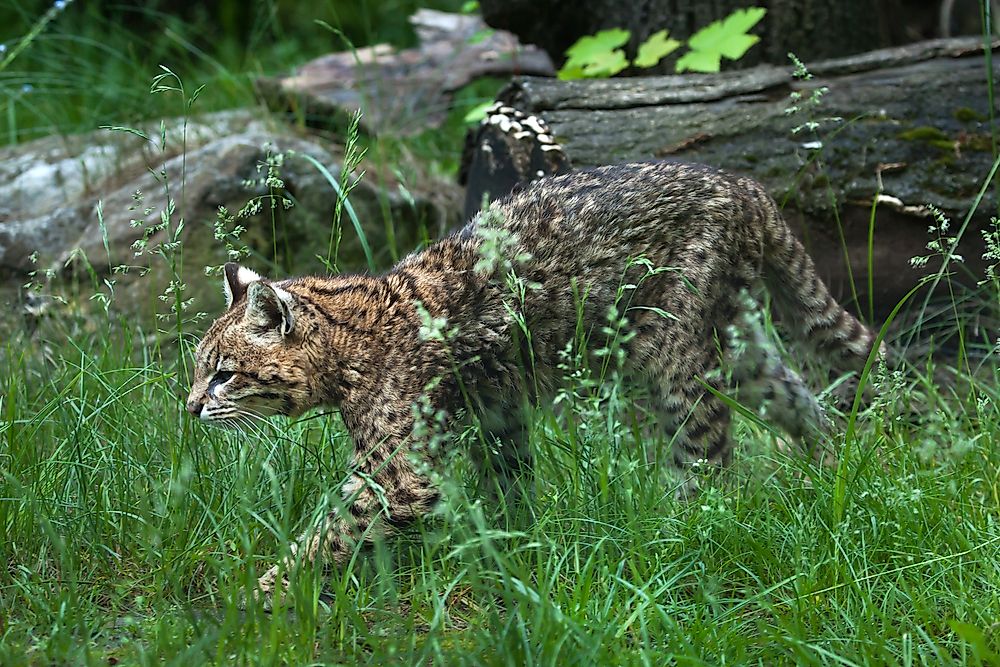
The Leopardus geoffroyi is found in the central and southern parts of the continent where they inhabit the Gran Chaco, Andes, and Pampas ecoregions. These cats have been spotted at elevations of up to 10,800 ft. The species prefers to inhabit areas with sufficient cover like scrublands, grasslands, etc. The size of this wild cat is similar to that of a domestic cat. Black colored bands and spots occur on its brownish to yellowish coat. The underparts are white or cream-colored. The Geoffroy's cat is a solitary and nocturnal species and often exhibits the unusual behavior of standing on its hind legs to search for prey. Rodents, insects, lizards, hares, etc., constitute the prey base of this apex predator. Breeding period lasts between October and March while the gestation period lasts for about 75 days. The IUCN labels it as a Least Concern species due to the existence of a stable and widespread population.
6. Kodkod
The Leopardus guigna is the smallest species of wild cat living in the Americas. Its range is restricted to parts of southern Chile and Argentina. These cats primarily inhabit the mixed temperate rainforests in their range but are also found in other habitats like the fringes of human settlements and secondary forests. The size of the adult cat ranges from 37 to 51 cm. The color of the coat of the kodkod ranges from gray to brown to yellow and features dark spots. The tail has dark rings and the underparts of the body are paler in color. These animals are active both at day and night but usually, prefer to rest in the shade during the day. They are excellent climbers and they feed on rodents, birds, lizards, etc. The kodkod has been labeled as Vulnerable on the IUCN Red List. Destruction of its habitat due to logging and agricultural land expansion is the biggest threat to the survival of this species.
5. Jaguar
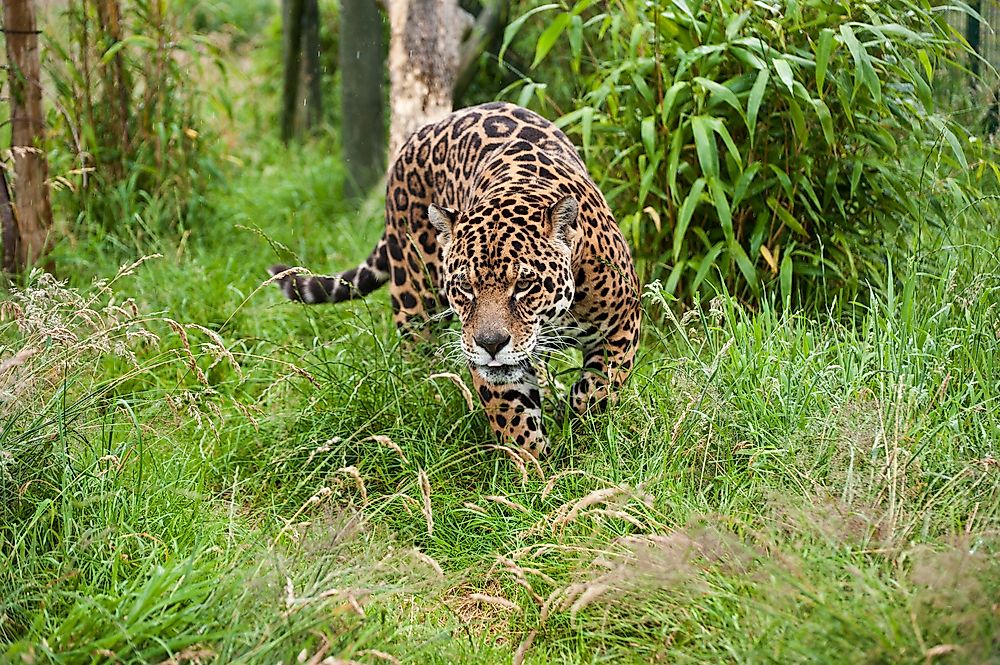
The Panthera onca is the largest wild cat species found in the Americas. The range of this species extends from the southwestern US to northern Argentina and Paraguay in South America. Jaguars are found in a wide variety of habitats ranging from rainforests to arid grasslands and wetland areas. Dense forests are the preferred habitat of this species. The length of the jaguar varies between 1.12 and 1.85 m from the nose to the tail base. Compared to their body size, their tails are only 45 to 75 cm long. The height of the jaguar at the shoulder ranges from 63 to 76 cm. The jaguar is the apex predator in the ecosystem where it is found. The animal is solitary and opportunistic in nature. The jaguar has a unique way of killing its prey. With its extremely powerful bite, the wild cat delivers a fatal bite to the brain of the prey, instantly killing it. The animals enjoy swimming to a great extent. The IUCN Red List lists the species as Near Threatened. Habitat loss and fragmentation and killing of the cat by the ranchers and farmers are the biggest threats to the jaguar’s future.
4. Margay
The Leopardus wiedii lives in South and Central America. In South America, the species is found in the northern part of the continent to the east of the Andes. These cats are found mainly in densely forested habitats but occasionally in plantation areas. The body length of fairly small cat ranges from 48 to 79 cm. The length of the tail is between 33 and 51 cm. The brown colored fur of the cat features rows of dark colored streaks or rosettes. The black-tipped tail has several dark bands. The margay is a highly agile cat and an excellent climber. It is known to hunt monkeys, lizards, birds, tree frogs, etc. These nocturnal cats are highly elusive in nature. The 80 days gestation period of this species ends in the birth of only a single kitten. The margay has been classified as Near Threatened by the IUCN. Loss of habitat is the biggest threat to this species.
3. Ocelot
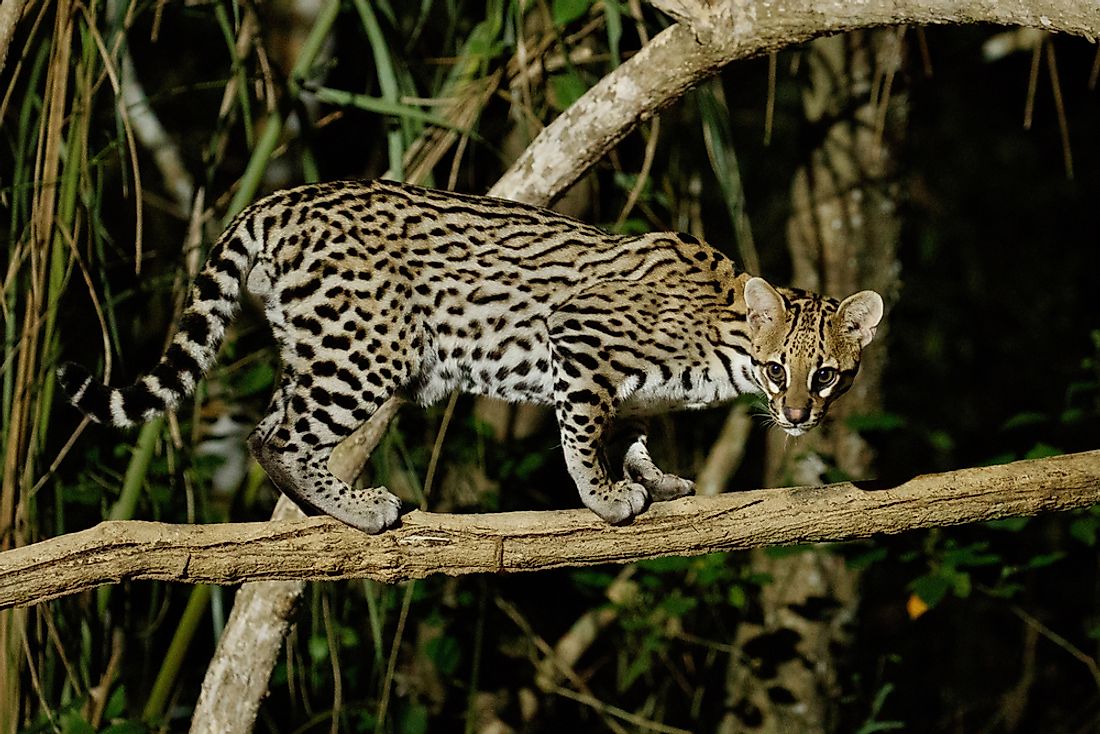
The Leopardus pardalis is a wild cat whose range extends from the southwestern parts of the US to South America. It lives in a wide variety of habitats like tropical forests, savanna, swamps, etc. The size of the cat ranges from 55 to 100 cm while the tail is around 26 to 45 cm long. The color of the fur ranges from creamy to gray or reddish gray. The fur bears black colored solid markings like stripes, open bands or closed bands. Rodents, rabbits, armadillos, small birds, reptiles, etc., constitute the prey base of the ocelot. The ocelot is a Least Concern species on the IUCN Red List since the 40,000-strong population is considered to be relatively stable.
2. Pampas Cat
The Leopardus colocolo, also known as the Pantanal cat or the colocolo, is a South American wild cat species that is found in wide variety of habitats at elevations ranging from 1,800 to 5,000 m. In some areas in Argentina, the species is found at even lower altitudes. Grasslands, shrublands, and dry forests are the preferred habitats of the colocolo. Although the cat is small in size, it has a sturdy built. The body size of the species ranges from 46 to 75 cm. The tail is around 23 to 29 cm long. The coat color of the Pampas cat varies significantly and several types are defined on the basis of coat color. The cat is listed as Near Threatened on the IUCN Red List.
1. Oncilla
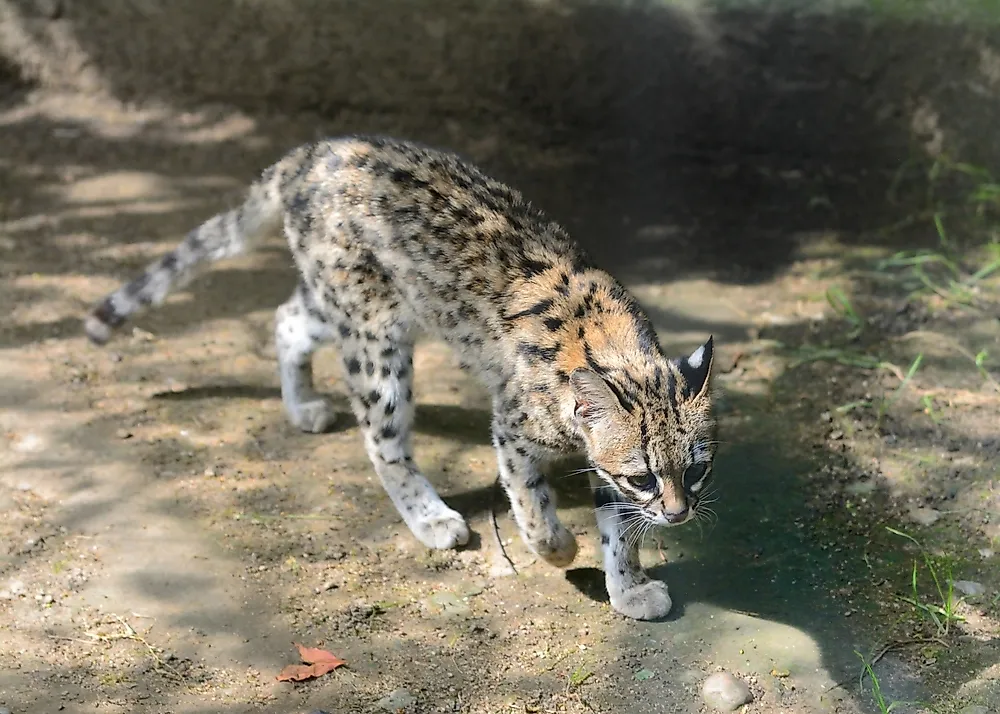
The Leopardus tigrinus or the tigrillo is a small cat whose range stretches from parts of South America to Central America. It prefers to inhabit the cloud forests up to elevations of 4500 m. It is also found in other types of habitats. It is found in Brazil, Colombia, Peru, and Ecuador. The oncilla has a size ranging from 38 to 59 cm and a tail that is about 20 to 42 cm long. The color of the fur of this species varies from dark ochre to light brown and features rosettes which are most prominent at the back and the sides. The oncilla preys on rodents, birds, lizards, frogs, etc. It is usually nocturnal in nature but is also known to hunt during the day. The species is classified as Vulnerable by the IUCN since habitat loss threatens its survival to a great extent.











